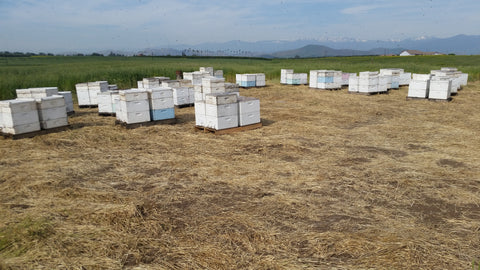Almond Pollination
The World's biggest pollination event, Almond Pollination, is conducted February thru March annually from Bakersfield to Chico in California. Over 2 million honey bee colonies are required to complete this massive pollination event and
M & D HONEY INC. plays a vital role in providing our honey bee pollination service to Almond Growers.
We use our own honey bee hives as well as leased bee hives from other beekeepers throughout the United States to supply our growers with a quality pollination service.






For the Almond Grower:
-We provide a complete service; starting with service details included in our contract.
-Communication before, during, and after pollination.
- We conduct hive grading, hive placement, and hive removal.
-We maintain a reliable source of bee hives to assure our growers receive an optimum pollination service.
-Orchard maps are used to help maximize honey bee flight and conform with grower requests for an overall quality pollination.
-We are always in need of additional holding yards or forage locations, and we are happy to compensate for leasing available ground that is good for our honey bees.

-Please call Mike at 559-974-4042 or email manddhoney@gmail.com for your orchard pollination service needs.
For the Beekeeper:
-We provide a complete service; starting with service requirements included in our contract.
-We supply holding yards where your bee hives can be overwintered; no charge if your bee hives are used in our pollination contracts.
-No charge for unloading or loading your bee hives onto semi-trucks if we use your bee hives in our pollination contracts.
-If you have your own pollination contract: we can move your hives in and out of orchards for you for a nominal cost.
Please call Mike at 559-974-4042 or email at manddhoney@gmail.com
After Almond Pollination, our own bee hives are transported to central coast for Avocado Pollination, to central valley and north valley for Cherry Pollination, and various locations around the state in the Spring and Summer months for pollination and or honey production.

We transport our hives at night or when temperature is below 50 degrees. This ensures that we keep all the bees in the hives during transit. We use nets to cover our bees when transporting longer distances.


